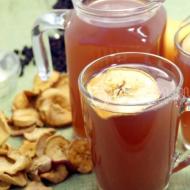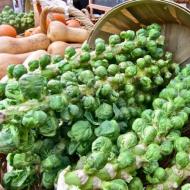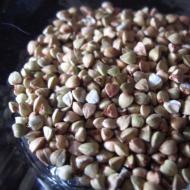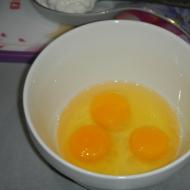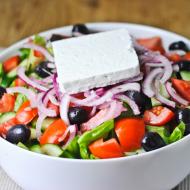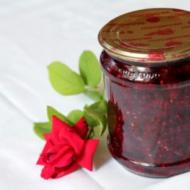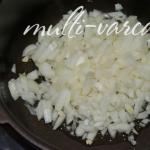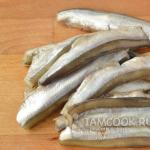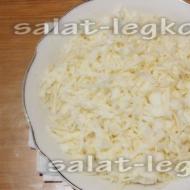
Mandarin wine is a simple recipe. Making tangerine wine at home. Homemade tangerine wine - because winter is coming
It makes sense to cook tangerine compote if you bought sour, tasteless fruits in the store, which are usually found before or after the natural tangerine season. Also in winter, during the season of these exotic fruits, many housewives brew tangerine drinks in order to preserve the freshness of the fruit and prevent their spoilage. In this case, you can enjoy a healthy drink not only in winter, but also in summer.
It makes sense to cook tangerine compote if you bought sour, tasteless fruits at the store.
Tangerine compote can be prepared without the use of additional fruit and berry ingredients. This is due to the fact that the unobtrusive light taste of the fruit not only perfectly quenches thirst, but also complements almost any dish.
To prepare a classic compote you need:
- 1 kilo of tangerines;
- half a kilo of sugar;
- liter of water.
 Tangerine compote can be prepared without the use of additional fruit and berry ingredients
Tangerine compote can be prepared without the use of additional fruit and berry ingredients How to do:
- Tangerine fruits are peeled and divided into slices.
- Tangerine slices are dipped in a liter of water, in which half a dessert spoon of soda is dissolved. The liquid is placed on the stove and cooked for 30 seconds.
- The boiled slices are placed in a colander, washed under running water and placed in a bowl of ice water for 60 minutes.
- Mix water and sugar in a separate container, bring the liquid to a boil, and cook for 7 minutes.
- Tangerine slices are distributed into clean containers and filled with hot syrup.
- The jars are covered with lids and then placed to sterilize for half an hour.
- Then the compote is closed using a preservation key, cooled and put away in a cool, dark place.
The prepared drink should be served chilled. You can decorate a portion of compote with a cinnamon stick: it will give the drink a spicy taste.
Cooking tangerine compote (video)
Compote of tangerines and apples: how to prepare?
One of the most aromatic drinks is considered to be apple-tangerine compote. The ingredients for this drink should be selected taking into account the following rule: if sweet tangerines are involved in the preparation process, then apples should be taken of sour varieties, and vice versa.
Unfortunately, citrus wine cannot be found in stores, but it can be made at home. This process is not at all complicated and will not take much of your time and effort. I offer a time-tested recipe called: “How to make tangerine wine.” And despite the fact that the cost may seem high, it is worth it! You will receive a unique drink with a divine taste.
Required ingredients:
- 10-11 kilograms tangerine
- 260 grams of sugar per 1 liter of juice
- 35 ml water per 1 liter of juice
First, you need to select ripe fruits that are not spoiled or rotten. It is advisable to choose a variety so that the tangerines are sweet and juicy. To prevent the wort from being spoiled by microbes, containers for use must be washed, sterilized and wiped dry. Handle ingredients only with clean, washed hands. Be sure to make a wine starter or purchase yeast for wine. Tangerines do not contain yeast, so there is a risk that the wine will not ferment without an auxiliary starter.
So, the sequence of actions should be as follows.
Tangerine wine recipe
- Rinse the tangerines in warm water and remove the peel. Squeeze out the juice from the peeled fruits, which should yield approximately 6 liters.
- Take a container with a wide neck, pour the juice into it, put the pulp without the skin, add water, wine yeast and sugar, but not all of it. First you need to put 140 grams per liter of liquid. Stir the wort and tie the neck of the container with gauze. The container should be kept in a dark room at room temperature. Once a day, the mixture must be stirred and the pulp that floats to the surface collected. After 3-4 days you will be able to see foam, hear hissing and smell a sour smell. Fermentation has already begun. Let's move on to the next step.
- We fold the gauze into three layers and strain the wort through it. Squeeze the pulp thoroughly.
- Add sugar again at the rate of 50 g. per liter of liquid. Stir and pour the drink into a special fermentation container. We put either a water seal or a rubber glove with a pierced hole on the neck of the container. Be sure to check the tightness. We send the bottle to a dark room with a temperature no higher than 25°C.
- After 3 days, take off the glove, drain 0.5 liters of wort through a thin tube, and dissolve sugar in it - 40 g. per liter of liquid. Pour the syrup into the fermentation container and put on the glove again and seal.
- After another 4 days, add the remaining sugar according to the recipe using the same technology.
- It will take 30 to 50 days to stop active fermentation of tangerine wine. The field of this wine will become lighter, sediment will appear at the bottom, and the glove will settle, since carbon dioxide will no longer be released. After this, pour the drink through a thin tube into another container, carefully so that no sediment gets in there.
- Close the container with a lid again and place the bottle in a dark room where the temperature does not exceed 16°C.
- While the wine sits, sediment may appear at the bottom of the container. So it is advisable to pour the drink into other containers several times through a thin tube to avoid clouding the wine.
- In order to age the wine, it will take 4 to 6 months. After this, you can taste and add more sugar to taste. It is best to store tangerine wine in hermetically sealed bottles in a cool place. It can be stored for up to 3 years. This recipe for making tangerine wine will yield up to 4 liters of aromatic and original drink.
The range of alcoholic beverages offered by well-known producers includes a huge variety of brands and varieties of different wines. However, among them it is quite rare to find high-quality alcohol made from citrus fruits.
In order to form your own opinion about such wines, I suggest choosing tangerines and making your own homemade wine based on them.
I will not sin against the truth if I say that tangerine wine is almost the only alcohol that is liked by everyone without exception: some appreciate the pleasant, pronounced taste, while others value the benefits of the drink.
Despite the high cost of this alcohol, its aroma and taste will leave an indelible mark on the soul of an experienced gourmet or an ordinary lover of quality homemade wine. Let's look at a few recipes for tangerine wine that are easy to make at home.
The method of making tangerine wine is absolutely identical to the recipe of any other citrus alcohol, but the taste of this drink is different from others.
Tangerine wine cannot be confused with anything else - it is a sip of invigorating freshness, dominated by pronounced citrus notes, seasoned with hints of tart bitterness from tangerine seeds.
Manufacturing process
- Wash the ripe tangerines thoroughly with running water, then peel them.
- Squeeze the juice from the peeled citrus slices in any convenient way. The result should be about 5.5-6 liters of juice.
- Pour the freshly squeezed juice into a wide-necked container, then add tangerine pulp, wine yeast and pour spring water at room temperature.
- Lastly, add the first portion of granulated sugar in the amount of 150 grams per liter of juice.

- Thoroughly stir the prepared mass and cover the container with multi-layer gauze to avoid the ingress of insects and dust.
- We transfer the wort to a windless, dark room where a constant temperature of 20 to 26 degrees is maintained. Mix the contents of the container daily, drowning the pulp that floats to the surface of the liquid.
- After four days, foam will form on the surface of the wort, hissing will be heard and a sour smell will appear - this means that the fermentation process has begun and it is time to strain the liquid through a gauze filter and squeeze out the pulp thoroughly. We won't need any more squeezes.
- Add a second portion of granulated sugar to the filtered juice at the rate of 50 grams per liter of liquid, stir the wort thoroughly, trying to dissolve the grains of the sweet ingredient as much as possible.

- Pour the resulting liquid into the fermentation vessel, filling it to a maximum of 75%. The remaining free space will be needed for foam and carbon dioxide, which will be released abundantly during the fermentation process.
- We install a hydraulic seal on the neck of the container, and then transfer the vessel with the contents to a dark room with a temperature of 20-26 degrees.
- After three days, remove the water seal and pour approximately 400-500 ml of liquid into a separate bowl using a silicone hose. Add a third portion of granulated sugar to the liquid in the amount of 30 grams per liter of juice. Pour the resulting syrup back into the fermentation vessel, return the water seal to its original place and shake the contents thoroughly.
- After another four days, we repeat the procedure for adding sugar, this time based on the calculation of 20 g per liter.

- We are waiting for the fermentation process to complete. It usually lasts from 35 to 50 days.
- When the wine brightens, a noticeable sediment will form at the bottom of the vessel, the shutter will stop gurgling, then carefully pour the liquid into another container, trying not to touch the sediment at the bottom.
- We fill the container to the top with young wine, then seal it hermetically and send it to a cool place where the temperature is maintained from 6 to 17 degrees.
- We age the alcohol for approximately 5-6 months to mature the wine and stabilize its taste. During the aging process, sediment will accumulate at the bottom of the vessel, and as it appears in a layer of 3-5 cm, it is necessary to get rid of it by pouring the liquid into another clean vessel. At this stage, the drink can be sweetened or fortified with medical alcohol in an amount of 3-16%.
- The ripe product is filtered through a cotton and gauze filter, and then poured into glass jars or bottles.
Did you know? From the amount of ingredients indicated in the recipe, the output is approximately 4-4.5 liters of finished wine. When storing alcohol in a cellar or refrigerator, the shelf life is from 2.5 to 3 years.
Chocolate tangerine wine recipe

The presented recipe was developed by an American couple from Tennessee. The result was so successful that this wonder instantly gained popularity around the world and became the property of any winemaker.
The only condition for obtaining a high-quality product at home is a very long aging - it should take place over one and a half to two years. Otherwise, you shouldn’t even think about preparing this strong drink.
Chocolate-tangerine wine is quite sweet and has a strength of approximately 12 to 14 revolutions.
List of required components
Manufacturing process

Tangerine wine recipe video
After watching this video, you will learn about the various intricacies of making tangerine wine at home. A professional winemaker will tell you the step-by-step process of making magical nectar, and at the end of the day, he will taste the resulting product and describe its real tasting characteristics.
Helpful information
- At home, it’s easy enough to make healthy beet wine using a proven, simple recipe. The alcoholic drink has an excellent dark violet color, impresses with a soft pleasant taste and a complex aromatic bouquet.
- An equally interesting technology for preparing wine from dried fruits will attract the attention of beginners in winemaking or those who are not used to sitting idle during the cold winter period. The alcohol contains ingredients that can be easily purchased at any time of the year.
- Be sure to try making it at home using a simple recipe that even someone who is completely unfamiliar with the rules of winemaking can handle. The alcoholic drink will bring the aroma of fresh berries into your home and delight you with a soft, intoxicating taste.
- If you have last year’s jam on your shelves or it didn’t turn out very tasty, then don’t rush to dispose of it. I offer an interesting, uncomplicated recipe that is very easy to implement at home.
This amazing tangerine wine can be prepared even by a beginner who is just getting acquainted with the laws of winemaking. There are many different versions of making this alcoholic drink in the world, but I have offered the most successful recipes that are easy to make at home.
If you would like to offer your own recipes for tangerine wine, I would be grateful for interesting ideas. Thank you for your time and good luck in the exciting field of winemaking!
In the modern world there are many different types of wines. However, with a huge selection on store shelves, you won’t find citrus wine. And to try this drink you need to prepare it at home. Let's choose tangerines. Homemade tangerine wine is a sip of freshness, with a hint of bitterness from the fruit seeds. Citrus is rich in various vitamins and microelements, and the benefits of tangerine wine are enormous. The technology for preparing a tangerine drink is identical to that of any other citrus wine. This process is simple and does not require much time. Of course, the recipe is expensive, but you will get a magical drink with an amazing taste.
Recipe for making tangerine drink
- Tangerines – 20 pcs.
- sugar – 8 glasses
- boiled water – 7 liters
- – 1 sachet.
Preparation:
- Wash the fruit thoroughly, peel and separate into small slices.
Tangerines must be ripe, without rot. It is best to opt for sweet and sour fruits.

Unfortunately, citrus wine cannot be found in stores, but it can be made at home. This process is not at all complicated and will not take much of your time and effort. I offer a time-tested recipe called: “How to make tangerine wine.” And despite the fact that the cost may seem high, it is worth it! You will receive a unique drink with a divine taste.
Required ingredients:
- 10-11 kilograms tangerine
- 260 grams of sugar per 1 liter of juice
- 35 ml water per 1 liter of juice
First, you need to select ripe fruits that are not spoiled or rotten. It is advisable to choose a variety so that the tangerines are sweet and juicy. To prevent the wort from being spoiled by microbes, containers for use must be washed, sterilized and wiped dry. Handle ingredients only with clean, washed hands. Be sure to make a wine starter or purchase yeast for wine. Tangerines do not contain yeast, so there is a risk that the wine will not ferment without an auxiliary starter.
So, the sequence of actions should be as follows.
Tangerine wine recipe
- Rinse the tangerines in warm water and remove the peel. Squeeze out the juice from the peeled fruits, which should yield approximately 6 liters.
- Take a container with a wide neck, pour the juice into it, put the pulp without the skin, add water, wine yeast and sugar, but not all of it. First you need to put 140 grams per liter of liquid. Stir the wort and tie the neck of the container with gauze. The container should be kept in a dark room at room temperature. Once a day, the mixture must be stirred and the pulp that floats to the surface collected. After 3-4 days you will be able to see foam, hear hissing and smell a sour smell. Fermentation has already begun. Let's move on to the next step.
- We fold the gauze into three layers and strain the wort through it. Squeeze the pulp thoroughly.
- Add sugar again at the rate of 50 g. per liter of liquid. Stir and pour the drink into a special fermentation container. We put either a water seal or a rubber glove with a pierced hole on the neck of the container. Be sure to check the tightness. We send the bottle to a dark room with a temperature no higher than 25°C.
- After 3 days, take off the glove, drain 0.5 liters of wort through a thin tube, and dissolve sugar in it - 40 g. per liter of liquid. Pour the syrup into the fermentation container and put on the glove again and seal.
- After another 4 days, add the remaining sugar according to the recipe using the same technology.
- It will take 30 to 50 days to stop active fermentation of tangerine wine. The field of this wine will become lighter, sediment will appear at the bottom, and the glove will settle, since carbon dioxide will no longer be released. After this, pour the drink through a thin tube into another container, carefully so that no sediment gets in there.
- Close the container with a lid again and place the bottle in a dark room where the temperature does not exceed 16°C.
- While the wine sits, sediment may appear at the bottom of the container. So it is advisable to pour the drink into other containers several times through a thin tube to avoid clouding the wine.
- In order to age the wine, it will take 4 to 6 months. After this, you can taste and add more sugar to taste. It is best to store tangerine wine in hermetically sealed bottles in a cool place. It can be stored for up to 3 years. This recipe for making tangerine wine will yield up to 4 liters of aromatic and original drink.

